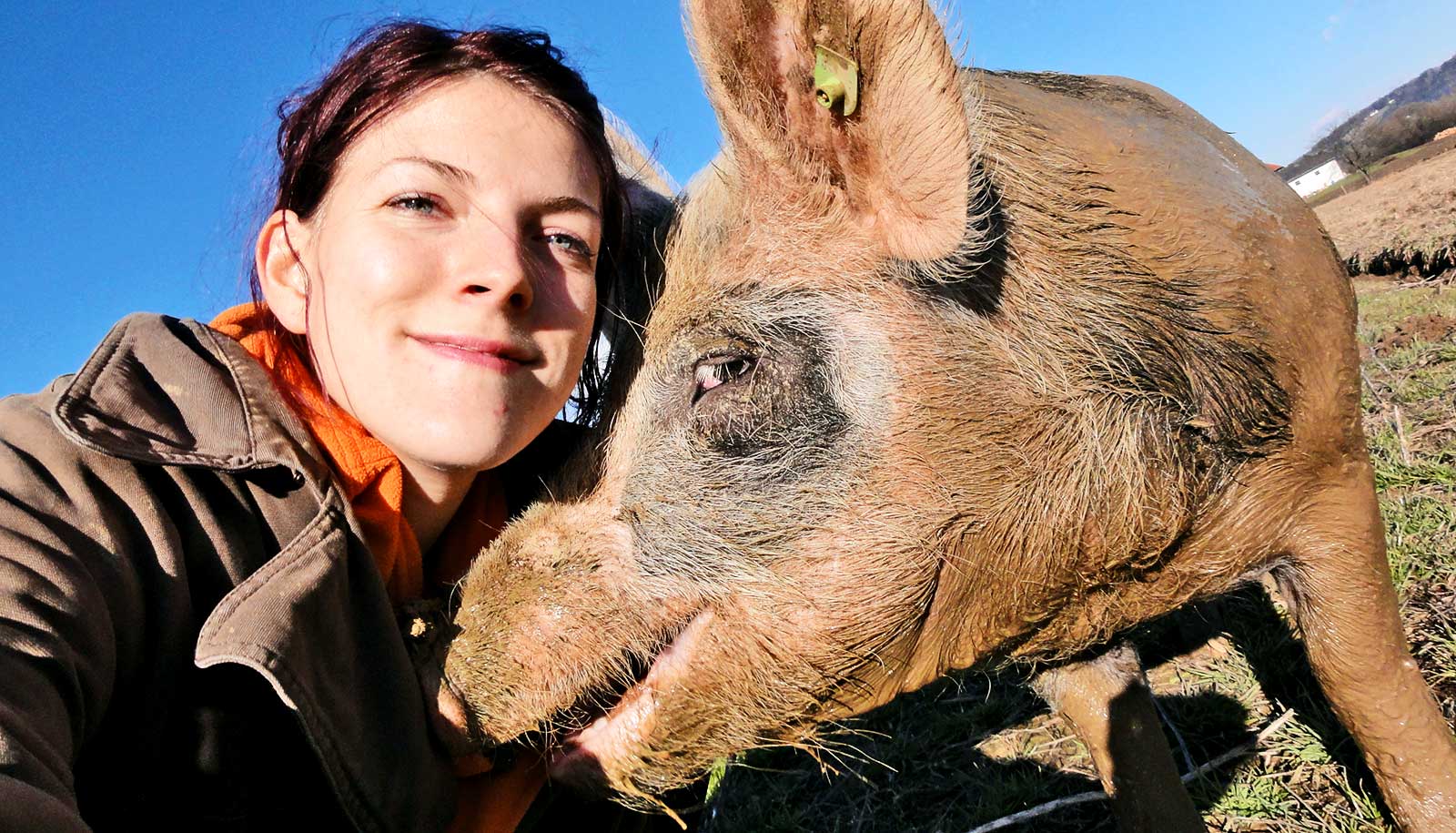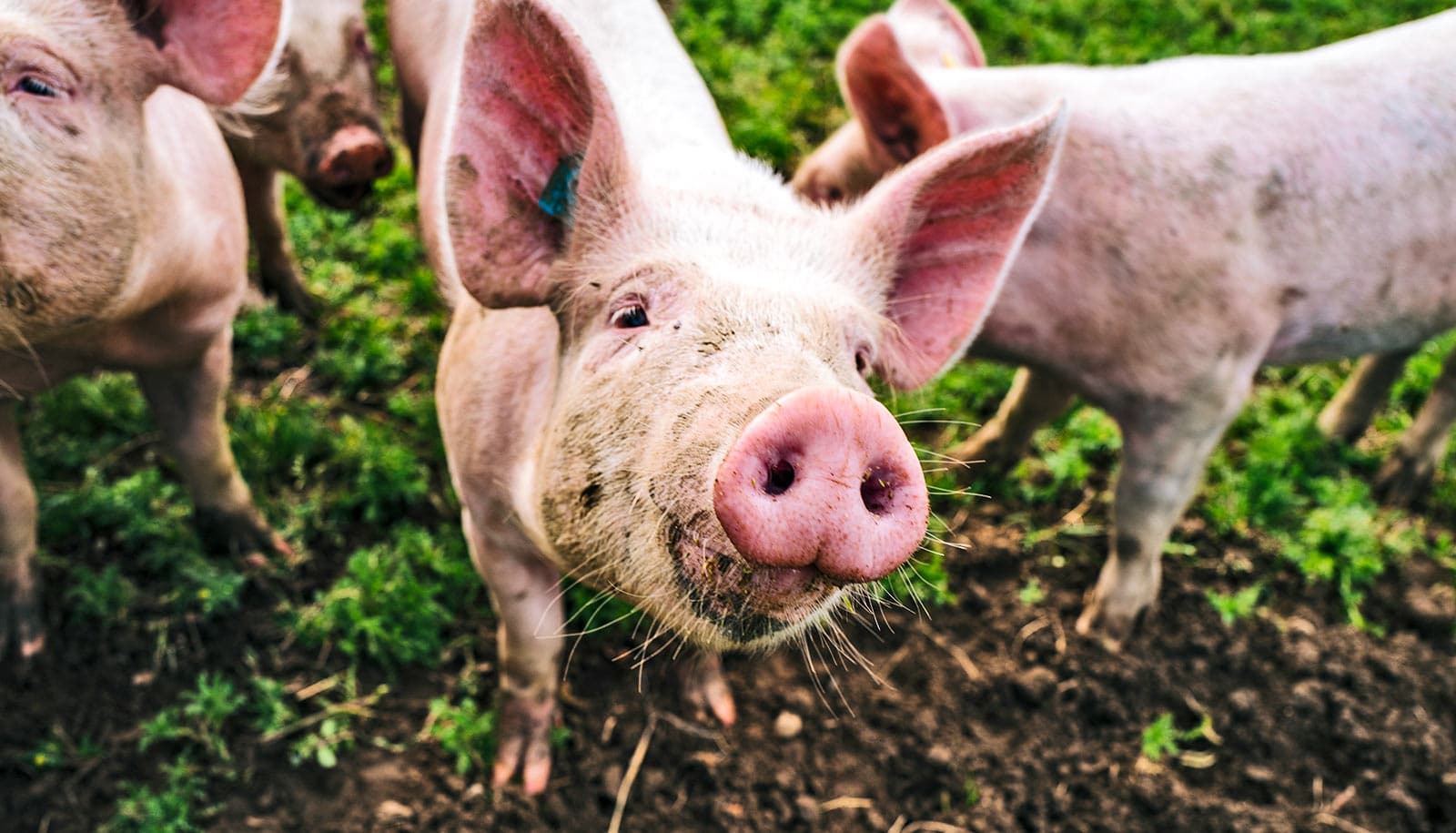Horses, pigs, and wild horses can distinguish between negative and positive sounds from their fellow species and near relatives, as well as from human speech, researchers report.
The study provides insight into the history of emotional development and opens up interesting perspectives with regards to animal welfare.
Along with her colleagues, behavioral biologist Elodie Briefer of the University of Copenhagen’s biology department investigated whether a range of animals can distinguish between positively and negatively charged sounds.
“The results showed that domesticated pigs and horses, as well as Asian wild horses, can tell the difference, both when the sounds come from their own species and near relatives, as well as from human voices,” Briefer explains.
The animals even showed the ability to distinguish between positively or negatively charged human voices. While their reactions were more subdued, all but wild boars reacted differently when exposed to human speech that was either charged with positive or negative emotion.
Three theories
The researchers worked with three theories about which conditions they expected to influence the animals’ reactions in the experiment:
- Phylogeny: According to this theory, depending on the evolution of species, i.e., the history of evolution, animals with a common ancestry may be able to perceive and interpret each other’s sounds by virtue of their common biology.
- Domestication: Close contact with humans, over a long period of time, may have increased the ability to interpret human emotions. Animals that are good at picking up human emotions might have been preferred for breeding.
- Familiarity: Based on learning. The specific animals in the study may have learned a greater understanding of humans and fellow species, who they were in close contact with where they were housed.
The conclusion is as follows. Among the horse species, the phylogeny thesis best explained their behavior. In contrast, the behavior of the pig species best fit the domestication hypothesis.
How the study worked
The researchers played recordings of animal sounds and human voices from hidden speakers.
To avoid having the domesticated animals react to specific words, professional voice actors performed positive and negative human speech in a kind of gibberish without any meaningful phrases.
The researchers recorded the animals’ behavioral reactions in a number of categories used in previous studies—everything from their ear position to their movement or lack thereof.
On this basis, the researchers concluded that how we speak matters to animals.
“Our results show that these animals are affected by the emotions we charge our voices with when we speak to or are around them. They react more strongly—generally faster—when they are met with a negatively charged voice, compared to having a positively charged voice played to them first. In certain situations, they even seem to mirror the emotion to which they are exposed,” says Briefer.
The animals in the experiment were either privately owned (horses), from a research station (pigs), or living in zoos in Switzerland and France (wild Przewalski’s horses and wild boars).
The researchers used animal sounds with a previously established emotion valence. They played the animal sounds and human voices to the animals from hidden speakers. Doing so required high sound quality to ensure for the natural frequencies heard best by animals.
The researchers played the sounds in sequences with either a positive or negatively charged sound first, then a pause—and then sounds with reverse valence, i.e. the reverse emotion. They recorded the reactions on video, which the researchers could subsequently use to observe and record the animals’ reactions.
Investigating ’emotional contagion’
Part of the aim of the study, was to investigate the possibility of “emotional contagion” in animals—a kind of mirroring of emotion. Situations where one expressed emotion is assumed by another. In behavioral biology, this type of reaction is seen as the first step in the empathy category.
“Should future research projects clearly demonstrate that these animals mirror emotions, as this study suggests, it will be very interesting in relation to the history of the development of emotions and the extent to which animals have an emotional life and level of consciousness,” says Briefer.
The study was unable to detect clear observations of “emotional contagion,” but an interesting result was in the order by which the sounds where delivered. Sequences in which the researchers played the negative sound first triggered stronger reactions in all but the wild boars. This included human speech.
According to Briefer, this suggests that the way we talk around animals and the way we talk to animals may have an impact on their well-being.
“It means that our voices have a direct impact on the emotional state of animals, which is very interesting from an animal welfare perspective,” she says.
This knowledge doesn’t just raise ethical questions about how we perceive animals—and vice versa, it can also be used as a concrete means of improving animals’ daily lives, if those who work with them are familiar with it
“When the animals reacted strongly to hearing negatively charged speech first, the same is also true in the reverse. That is, if animals are initially spoken to in a more positive, friendly voice, when met by people, they should react less. They may become calmer and more relaxed,” explains Briefer.
Next step for the research is the switchover. Briefer and her colleagues, are now looking into how well we humans are able to understand animal sounds of emotion.
The actors voices were provided by the GEMEP Corpus—a collection of audio and video recordings featuring 10 actors portraying 18 affective states, with different verbal contents and different modes of expression for use in scientific research.
The research appears in BMC Biology. Additional researchers are from the Swiss National Stud Farm of Agroscope; Humboldt-Universität zu Berlin, and the University of Copenhagen.
Funding for the research came from the Swiss National Science Foundation.
Source: University of Copenhagen


